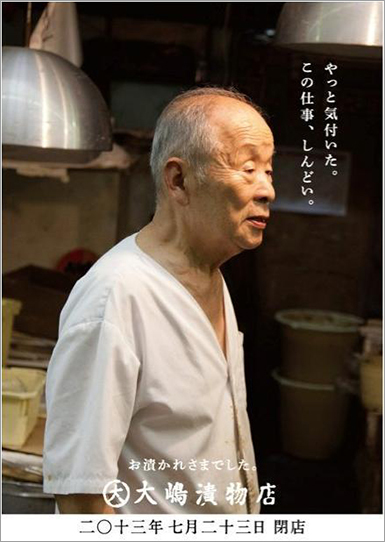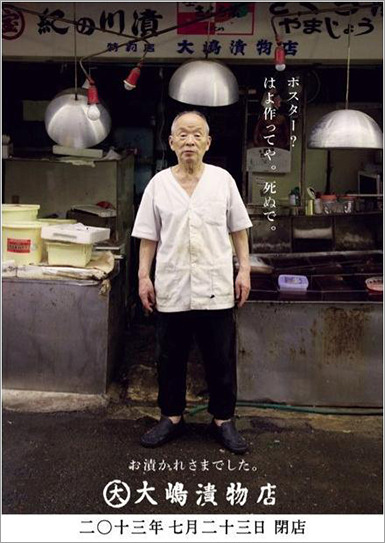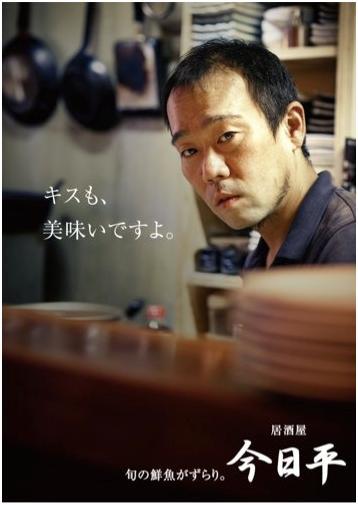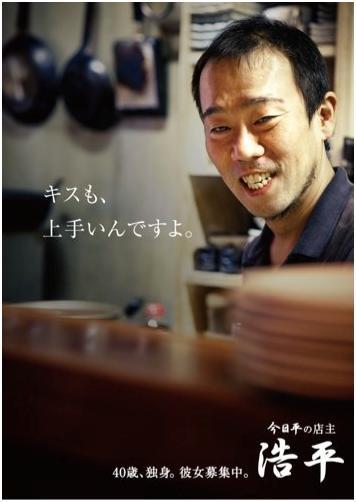Following the first part, we present the young creators' roundtable discussion on the "Shopping District Poster Exhibition."
What We Focused On During Production
Kusaka: Are there any particular things you keep in mind during production?
Matsushita: I feel the poster exhibition's fate is largely decided by whether it gets media coverage. The number of local people who see it versus the number of people nationwide who see it through media coverage is orders of magnitude different. So, I don't aim for TCC recognition with this poster exhibition. What I aim for is media appeal. That's why, this time too, I started by thinking, "We absolutely need to get media coverage somehow."
Takigami: I don't think about industry reception at all. My top priority is making the shop owners happy. Well, that's a given in any job, but it's rare to find work where you feel this purely about wanting the client to be happy. Usually, salespeople act as intermediaries with clients, but for the poster exhibition, we take on the sales role ourselves, meeting shop owners and interviewing them multiple times. That's probably why I care even more about the clients' reactions. It builds a closer connection, I guess. We really do go for interviews many times, and I realized that the shop owners' words often become the copy itself, and the more I go, the more hints I get. This is something I can apply to my regular work too.
C: Shota Maeda AD: Yoichi Takigami P: Keita Kusaka
Kusaka: Several people mentioned that the more interviews you do, the better copy you can write.
Matsushita: The info from the first or second interview isn't that meaningful. What the shop owner immediately pushes—"Make us a poster like this!" or "Our selling point is this!"—is usually obvious just by looking. Of course, that's still important foundational info. But around the third interview, when they're running out of things to say, if you persistently keep asking questions, they'll sometimes blurt out a great story out of desperation. Take Kaikatei, the Chinese restaurant I worked with this time. At first, they said, "Make a poster like my family's soaking in a bath of mapo tofu." Then I kept going back, persistently asking questions. During the third interview, they mentioned they kept the recipes left by the previous owner, the old man, in the kitchen and showed them to me. That's it! That's exactly what I was waiting for! I used that as the concept.

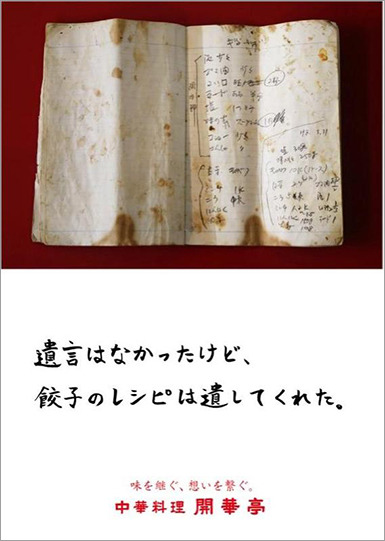
C: Yasushi Matsushita AD: Tsubasa Koji P: Kyohei Myoga
Kobori: Watching the reactions to the first and second poster exhibitions, I noticed people really like posters about life and death. That kind of thing feels like a surefire hit for poster exhibitions.

C: Fumiko Nagai AD: Ai Kono P: Keita Kusaka
Kusaka: In that sense, Matsushita's project this time was also about his late father, right? I heard the shop owner's mother actually placed the poster on his father's Buddhist altar. She was so moved. A poster offered at an altar is pretty rare, you know.
Matsushita: If it made them that happy, we're touched too. Glad we didn't go with the silly poster the shop originally wanted. We almost caused an idiocy inflation. That shop loves silly stuff normally. They fold origami with spring roll wrappers, and most menu names are ridiculous too. Regulars know it's a shop that loves silly things, so I thought adding an emotional poster with a slightly serious tone might give the place a bit of edge.
Training Results
Kusaka: Did the poster exhibition ever directly benefit your actual work?
| |
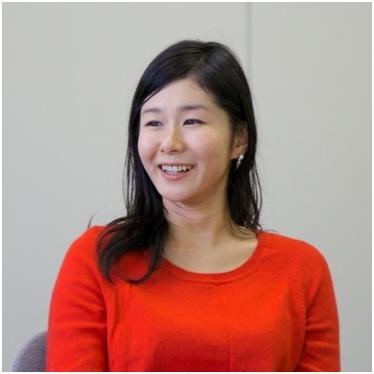 |
Nakao: Someone who saw a poster I made approached me with a new job, saying, "I want to do something like this." Also, a poster I designed for Sawano Kobo ended up being used as a CD jacket.
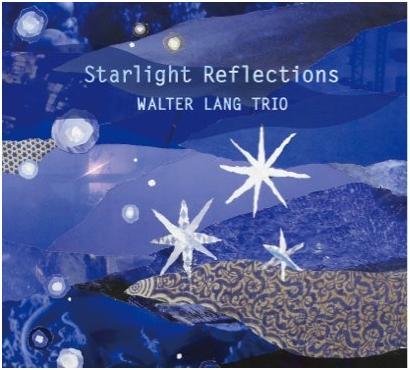 |
|
Shinsekai Market's JAZZ Label
Sawano Kobo's Jacket
|
|
|
Matsushita: I was in a taxi the other day, and the driver told me about the poster exhibition. He said, "They're having a poster exhibition in Bunno-sato, so I'm thinking of going with my wife next time." It made me happy to realize it's not just us, or just that shopping district, or just people within the industry getting excited about it. Regular people living their lives know about the poster exhibition and are interested in it. I work thinking I'm really good at what I do, but usually, every time I pitch a project, my CDs get torn to shreds, and it really hurts. But at the poster exhibition, when people say, "Hey, yours is pretty cool!" and give me a little praise, it helps restore my mental balance.
| |
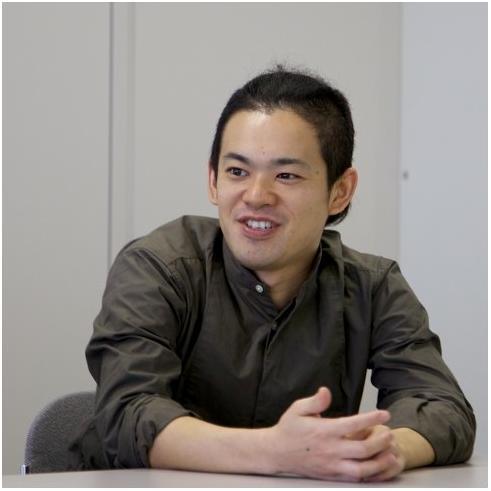 |
Takigami: Oh, I totally get that. That kind of joy is different from getting featured in industry magazines, right? Seeing your poster go viral on Twitter or something like that really builds your confidence. After it got picked up by summary sites, I'd go to the client and say, "Hey, we made that!" and they'd be like, "Oh, you did? That's really cool!" That made me super happy. When introducing myself, saying "I'm Takigami, the one who made that," often gets a "Oh, that one! I know it!" reaction.
Nakao: Above all, seeing the shop owner genuinely happy when we deliver the final product is the best feeling. With TV commercial work, there are just too many people involved, both inside and outside the company. Even if someone says, "That's nice," it can sometimes feel like it's not really about you. But when a poster we designed and created just the two of us gets praised, it feels like I'm being praised personally. It makes me think, "Ah, I've still got it! I've got a skill I can rely on!" and gives me real confidence.
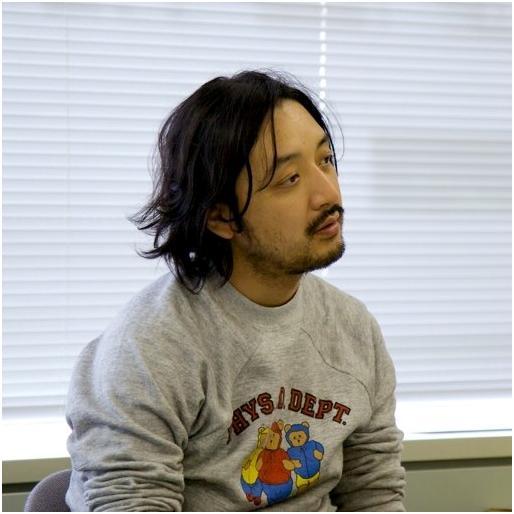 |
|
Kusaka: Lately, we've seen more places doing similar projects to our poster exhibitions. Like comedians making posters with funny copy for some shopping district – they're doing exactly what we do, but it's just not funny. Even professional comedians, who should be funny, are completely bombing with their copy. That made me realize, ah, comedy and advertising really are different things, and we're professionals in our own right. I never liked the term "creator" because it sounded too grand, but I realized we really are "creators with a skill." So, everyone, will you do it again next time?
Matsushita: Yes.
Kobori: Yeah, sure.
Takigami: If we're told to.
Nakao:...
Kusaka: Hey, Nakao, why are you silent? Did you actually all hate it?
Nakao: Got it! I'll do it next time too (laughs).
Otsuki's Thoughts: The key to shopping districts is "the charm of the shop owners"
For my first poster exhibition in Itami, I was assigned to cover "Kyōhei," an izakaya known for its delicious fish. This owner was... full of things to poke fun at.
My partner, AD Matsunaga, and I visited him several times for interviews. But no matter what we asked—about what he wanted to highlight, the shop's features—his responses were always "Yes," "No...," "I don't know," or "Please stop." The conversation would just end there, leaving us with zero information about the shop.
After spending several days sampling numerous items from Kyōhei's menu, the owner finally opened up a little. He said, "...My name is... Kōhei... so..." and finally revealed the origin of the shop's name. He explained he'd expressed his determination—"I'll prepare the dishes today!"—by playing on his own name. During the roundtable, someone mentioned, "The info you get at the start of an interview isn't worth much." But I was silently arguing, "That only applies to owners who talk as much as the average person, or even more!"
Our pair, tasked with designing a poster for the taciturn Kohei's shop, had no choice but to cling to the information we'd painstakingly gathered over hours: "The owner's name is Kohei." And then, as we were leaving, we'd drunkenly, super forcefully, and persistently pried out the information: "He... doesn't... have a girlfriend..." But we take pride in the fact that we were able to create a poster that says, "But that's precisely why we made it! Because Kohei-san's awkwardness is charming!" When we delivered the poster, we thought we saw a faint smile on his face. That feeling that he was pleased left us completely satisfied.
Listening to participants at the roundtable, I truly felt that no matter the shop or the concept, the "personality of the owner" vividly seeps through the posters. I think the charm of the shop owners is also what makes shopping streets superior to large shopping malls. (Yuri Otsuki)
C: Yuri Otsuki D: Daisuke Matsunaga P: Takahiro Deguchi
Afterword
The poster exhibition is becoming an annual tradition at our Kansai branch. When poster season rolls around, everyone gets restless. The week before the deadline, 60 people are all working feverishly on posters at once, filling the floor with incredible energy. It's like a festival. There are advertising festivals all over the world, but this one is the real festival! In other words, the poster exhibition is an "advertising festival." It becomes a celebration that unites people and the community through advertising.
It's wonderful to imagine a future where many towns become interesting through posters, revitalizing the communities, participants win awards, take pride in their work, and tackle their current jobs with renewed vigor. I hope this continues for 10, 20 years, and beyond. Lastly, we're holding another poster exhibition starting February 21st. This time, it's in Tohoku! Sixty-three creators from Sendai, Yamagata, Tokyo, Osaka, and Okinawa will participate to help revitalize Onagawa Town in Miyagi Prefecture, which suffered severe damage from the tsunami. Stay tuned for this one too! (Keita Kusaka)

Kancri Communications Staff
Advisor: Ryoji Yamamoto (Executive Creative Director, Creative Planning Bureau, Dentsu Inc. Kansai Branch)
Leader: Keita Kusaka (Copywriter, Creative Planning Bureau, Dentsu Inc. Kansai Branch)
Staff: Yuri Otsuki (Copywriter, Creative Planning Bureau, Dentsu Inc. Kansai Branch)
Photography: Kantaro Ohara (Art Director, Creative Planning Division, Dentsu Inc. Kansai Branch)






